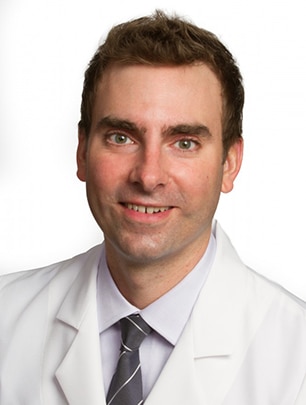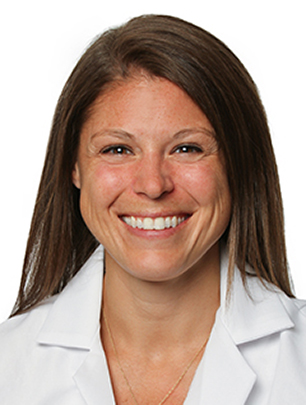X
Glaucoma is a progressive disease of the optic nerve that is a leading cause of blindness in this country. Because early in the disease there are no symptoms, glaucoma is often referred to as “the silent thief of sight.” In the majority of patients with glaucoma, the pressure inside the eye is elevated. With early detection and treatment, vision loss and blindness from glaucoma can be prevented.
Elevated intraocular pressure, advancing age, African ancestry, family history, history of ocular injury, extreme nearsightedness and chronic use of corticosteroid medicines are the major risk factors. Diabetes and high blood pressure are minor risk factors.
There are several different types of glaucoma, all of which have progressive optic nerve injury and visual field loss in common. Except for Normal Tension Glaucoma, all are associated with elevated intraocular pressure.
This diagnosis refers to patients believed to be at high risk for developing glaucoma or in whom glaucoma is suspected but cannot be confirmed. A person may be considered a glaucoma suspect on the basis of high intraocular pressure, a suspicious appearance of the optic nerve or visual field, or the presence of risk factors.
Open angle glaucoma (OAG) is the most common type of chronic glaucoma in which the intraocular pressure is high but the drainage angle is open and normal in appearance. Elevated pressure in the eye damages the optic nerve and results in permanent vision loss. OAG can be treated with eye drops and oral medications, laser and filtering surgery.
In this type of glaucoma, characteristic optic nerve damage and visual field loss occur at pressures within the normal range. Studies have confirmed that lowering pressures further with medications, laser or filtering surgery results in a lower risk of disease progression.
This common type of secondary glaucoma is due to clogging of the drainage channels by an abnormal white substance that is deposited throughout the eye. Elevated intraocular pressure is treated with medication, laser or surgery.
Secondary glaucoma occurs as a result of an eye injury, inflammation, tumor, cataracts, diabetes or vascular disease. Sometimes, medications such as steroids can cause secondary glaucoma. Treatment is directed toward both the underlying problem as well as lowering pressure with standard glaucoma therapies.
This type of glaucoma is a form of secondary glaucoma that occurs when pigment granules from the iris (the colored part of the eye) are rubbed off and clog the drainage channels in the eye, causing the pressure to rise. Medication, laser or surgery may be used for treatment.
Sudden closure of the drainage angle results in a rapid increase of pressure in the eye. Symptoms include severe eye pain, blurred vision, halos around lights, nausea and vomiting. Treatment is needed immediately to minimize optic nerve damage. Angle closure glaucoma is usually treated with laser or microsurgery. Patients that are farsighted, especially those with cataracts or Asian ancestry are at risk for this type of glaucoma.
This rare type of glaucoma occurs in infants due to incomplete formation of the drainage channels in the eye during the prenatal period. Medication and surgery can help treat this type of glaucoma.
Glaucoma damage is permanent and irreversible. While there is unfortunately no known cure for glaucoma, with early detection and careful management, damage to your eyesight can be halted or minimized. All treatments aim to reduce the pressure in your eye, and treatments vary depending on the type and severity of your glaucoma.
Glaucoma is most commonly treated with eyedrop medication. Medications need to be taken every day. Medications can be very effective in preventing vision loss from glaucoma, but they may not work for everyone. Sometimes they may be ineffective, produce side effects or they can be difficult to remember to take.
A laser procedure known as Selective Laser Trabeculoplasty (SLT) is a very safe and effective treatment for glaucoma. It is becoming more and more common as a primary treatment for glaucoma and may be used as a substitute for medications. SLT is used to make the internal drainage system in the eye work better and, therefore, reduce eye pressure. Recently, the LiGHT trial, a randomized controlled clinical trial to evaluate SLT versus medications, found that SLT is equally safe and effective as medications and is significantly more cost effective. Your doctor may recommend SLT as a first line treatment for glaucoma.
Surgery is also a treatment option for glaucoma. Surgery ranges from Minimally Invasive Glaucoma Surgeries known as MIGS procedures that can be combined with or without cataract surgery, to more extensive surgeries where a new drainage system is created such as with a trabeculectomy or tube shunt surgery. Should you need it, you and your doctor will decide what surgery is best for you.
If you suffer from glaucoma, we can provide the care needed to treat your eye condition. Our fellowship-trained ophthalmologist, Dr. Brian Tienor and our optometrist Dr. Laura Capelle, specialize in the field of glaucoma and provide comprehensive medical and surgical management for all types of glaucoma.
Don’t just take our word for it! Hear from our patients.
Our excellent team of providers is here to make sure your experience is a positive one. Whether it's our doctors or our professional staff, we promise to make every effort to give you the best possible care.

Brian Tienor, M.D. is a glaucoma specialist and comprehensive ophthalmologist. He believes that above all, “the patient comes first.” After growing up in Eau Claire, Wisconsin, he moved to Minnesota where he attended college, medical school, and completed a residency in ophthalmology, all at the University of Minnesota, Minneapolis. Dr. Tienor also completed a glaucoma management and surgery fellowship at the University of Iowa in Iowa City. After concluding his training, he began practicing as a glaucoma specialist in Chicago, Illinois, after which, he moved back to the region he calls home and joined Associated Eye Care.
In his free time, Dr. Tienor likes to spend time with his wife, Ann and daughter, Ella. They enjoy spending time outdoors, mountain biking and downhill skiing.

Dr. Capelle joined the Associated Eye Care team as the Ocular Disease Fellow in July 2017. Upon completing her fellowship with Associated Eye Care, Dr. Capelle remains on staff as an associate practicing comprehensive optometry with an emphasis on glaucoma. She earned her BA in psychology from Concordia College in Moorhead, MN. After finishing her undergraduate degree she spent the next four years as a Certified Ophthalmic Assistant before attending optometry school at Western University College of Optometry in Pomona, CA. During her four years at Western University, she was a member of the optometric honors society, Beta Sigma Kappa. She was on the Dean’s List all four years and graduated with highest honors as Salutatorian. Dr. Capelle is a Diplomat of the American Board of Optometry and is also a Fellow of the American Academy of Optometry. She has a special interest in glaucoma, ocular disease, and dry eye treatment. She also likes to keep up with the newest technologies on dry eye management.
Dr. Capelle lives in the Twin Cities with her Husband, son and springer spaniel dog Isabelle. She enjoys running, and has completed 21 marathons to date! In her free time, she likes to go to her cabin on Woman Lake in Hackensack, MN. Dr. Capelle also enjoys cross country skiing, baking, traveling, and going to Minnesota United and Twins games.